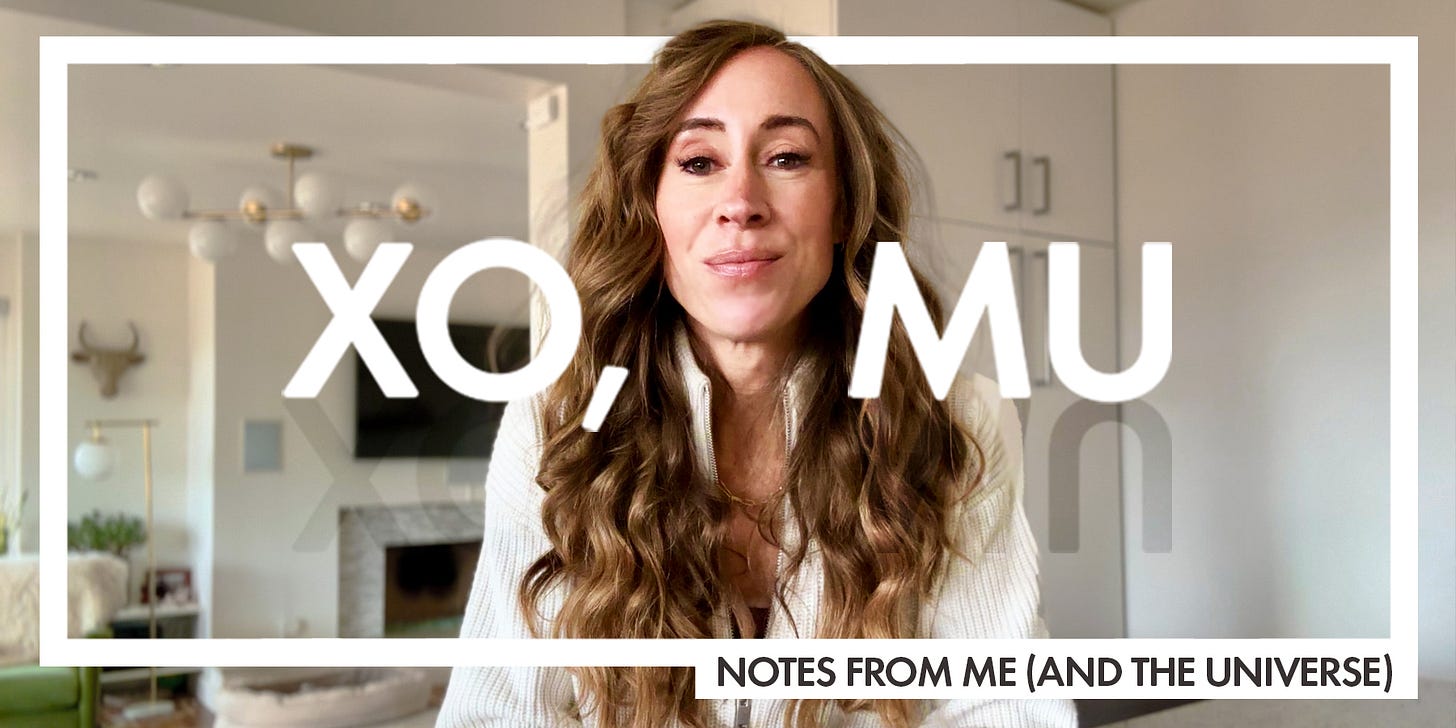Say yes without saying YES-yes
It's definitely not a no, but it's also not a 100% yes. Here's how I employ creative boundary-setting so we can both get what we want.
This issue is brought to you by LATHER, who finally got me into a solid skincare routine. Trust me, I resisted for years. I didn’t have the energy to use 27 different products every night, nor did I want to spend a fafillion dollars. (I had BOUNDARIES around my time and finances, okay?) Then I discovered LATHER, which met ALL my conditions. I now have a three-step routine morning and night, I can’t believe how affordable it is, and my skin looks ah-mazing. The difference I’ve seen in texture, redness, and evenness of skin tone is incredible! I love their About Face travel kit so I can maintain my skincare on the road, and the Muscle Ease Duo after a trail run. The variety of products makes it easy to cover all my bases. Try LATHER for yourself and save 15% on your order with the code MELISSA. (The link goes to all of the hair and skin products I currently have on rotation, or have tried and loved.)
A few years back, I had been invited to give a presentation at a prestigious event. It was an honor—but I really didn’t have the time or energetic capacity to create a 45-minute presentation (with slides) by the event date. I wanted to say yes, because this was a huge opportunity, and my publisher had worked hard to arrange it. But if I said yes, I’d be stressing myself out to the breaking point, my other work would suffer, and the presentation would likely reflect that.
Yes or no? I struggled with this question for days; it literally kept me up at night. Meanwhile, my publisher was waiting for a decision. Then, my agent said to me, “Why don’t you tell them you can’t do a presentation, but you could do a fireside chat?” (Fireside chats are interview-format and less formal. They don’t require you to memorize a presentation, or prepare slides.)
It was like the clouds parted and the angels sang. Why didn’t I think of that? I can’t say yes, but I couldn’t say no… so I said, “Yes, if…” and pitched my middle-ground proposal.
They accepted! The event went exceptionally well! And from that point on, my boundary practice shifted from a lot of black-or-white thinking to “where is the grey, and how creative can I get to find it?” (Note: I’ve used that same strategy twice more, delivering fireside chats for a women’s conference and a brand’s health summit, with great success.)
Here are two questions to help you get creative and make the connection within the appropriate boundaries.
If you don’t want to do the thing, just say no. But if you want to do it, but there are some things standing in the way, take a more creative approach.
*IYKYK... Yes, the famous Jackson Shower Hair started with LATHER too!What can you do within their terms?
My husband uses this boundary often, and it works quite well. He uses it mostly in contract negotiation. A brand will reach out and ask for a 10-minute video for a set price. That price is way too low for his quality of work and that length of a video, but the brand is cool, and he’d love to get a foot in the door with them.
His unsaid boundary is, “I won’t produce work unless I’m fairly compensated for it.” He knew the brand was unlikely to meet his price, so he counter-offered: “I understand your budget is X. For that amount, I can make a 2-minute talking-to-camera video. If you can come up to XX, I can make that a 4-minute video with B-roll.”
He’s setting the same boundary here, but in a more creative way. More than that, he’s indicating that he’d like to say yes, which can go a long way towards building or maintaining a healthy relationship.
Here are other examples of honoring your boundaries within their terms:
Your sister asks if you can babysit for the day. You tell her, “I’d be happy to watch the kids, but I have to leave by 2 PM. Would that be helpful?”
Your son and daughter-in-law ask to borrow money for a new car. You’re uncomfortable lending them that much, so you say, “I am happy to gift you (an amount you’re comfortable never getting back).”
Your teacher asks if you can provide cupcakes for the school bake sale this week. You reply, “I’m happy to donate cupcakes, as long as I can get them from my local bakery. I won’t have time to bake before Friday.”
What is left unsaid (but should be obvious) here is, “If this doesn’t work for you, then my answer is no.” (Which you will then have to say out loud if your counter-offer does not, in fact, work for them. At least you tried!)
What can you do within your terms?
Sometimes, you can flex your boundary by agreeing to exactly what they want, while adding parameters that feel good to you. I’ll give you an example: A few years ago, a group of girlfriends wanted to get together on St. Patrick’s Day. It had been a while since we all hung out, and I really wanted to go, but I hated the idea of a crowded bar full of drunk people, and I definitely didn’t want to drink.
My friends didn’t care if I drank, they just wanted me to come! I asked where they wanted to meet, and one of them suggested an upscale bar right after work, so it would be less crowded. One boundary condition met! So I told them I’d love to meet where and when they suggested—and that I’d be drinking water, but I’d add a lime to be festive. The night was fun, I stuck to my boundaries, and everyone got what they wanted.
Here are other examples of honoring your boundaries within your terms:
Your in-laws want to visit over 4th of July weekend. You tell them, “We’d love to have you visit. We’re entertaining that weekend, so we’ll find you a hotel. We’re excited to have you here for the pool party!”
An acquaintance reaches out and asks if they can pick your brain. You respond, “I’d be happy to help, as long as it’s in my wheelhouse. First, give me a preview of what you want to talk about, and one thing you want to walk away with after our conversation. Then we’ll set up a day and time to chat.”
Your spouse wants to get a dog. You respond, “I'm ready for a dog, as long we adopt it from a shelter, and it’s already house-trained.”
Remember, these are all scenarios you want to say yes to—but just saying yes would leave you stressed, over-committed, or burned out. Here, you’re giving them exactly what they want, with conditions that feel good to you.
Boundaries your way
If you’re new to boundaries, or just started practicing them, it’s likely you think of your boundary practice as all or nothing; yes or no. The problem with that approach is that life doesn’t always offer you “hell yes” or “hell no” opportunities.
If you say yes without qualification, you may end up giving more than you are able, or want to. If you say no because you can’t meet some of the parameters, you may end up missing out on a wonderful/fun/rewarding experience.
The next time someone asks you for something, follow this checklist:
Is it a “hell no” or a “no, even under the best of circumstances?” Just say no.
Is it a “yes, but I need to account for a few things to really feel good about it?” Identify what those things are, then ask for them/or offer those conditions.
Is it a “no, but only because of these one or two specific things?” Identify those things, then ask for them/offer those conditions.
Finding the grey in your formerly black-and-white boundary practice will open up a world of opportunities to deepen your relationships, have experiences you enjoy, and preserve your time, energy, finances, and capacity—all at the same time.





In my mind, I call this the “no, but”. When I was an administrator, I’d get all sorts of requests from my staff, from colleagues, from other leaders. To get around saying flat-out no, I’d say “I can’t do that but I can do this”. Made me feel like I had a lot more control over what I agreed to and it allowed me to provide support in ways that met my needs too. A request/ask is really just a starting point for negotiation, in any circumstance.